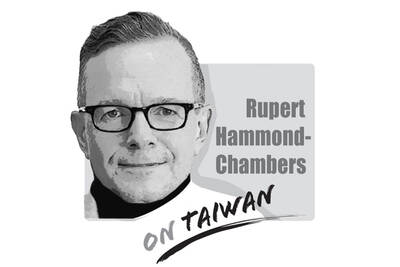China has been rapidly expanding its banking operations in the Asia-Pacific region, especially in the context of a gradual withdrawal by Western banks.
For example, after Australia’s Bendigo and Adelaide Bank announced its plan to withdraw from Nauru, Bank of China, which has opened offices across the region, signed a memorandum of understanding on cooperation with the Nauruan government. This quick reaction raises worries that China might have a broader hidden agenda.
The withdrawal of Western banks is partly due to increasingly stringent financial supervision requirements.
However, their withdrawal makes it more difficult to open US dollar-denominated bank accounts in Pacific island nations, which weakens those nations’ financial resilience. Over the past decade, correspondent banking relationships in the region have been declining twice as fast as the global average.
The US and Australia are taking steps to address this challenge. Speaking at the Pacific Banking Forum in Brisbane, Australia, which ran from July 8 to 9, Australian Assistant Treasurer Stephen Jones said that his nation wants to be the partner of choice in the Asia-Pacific region, in both banking and defense.
He said that Australia would be concerned if there were some nations operating in the region whose principal objective was advancing their own national interest rather than the interests of Pacific island nations.
US Department of the Treasury Undersecretary for Terrorism and Financial Intelligence Brian Nelson said that Washington recognizes the economic and strategic importance of the Asia-Pacific region, and is committed to deepening its engagement and cooperation with its allies and partners to bolster financial connectivity, investment and integration.
These US initiatives are no doubt aimed at countering China’s growing influence in the region.
The World Bank and the Asian Development Bank are working on improvement programs to resolve problems facing de-risking efforts in Pacific island nations. These efforts would require the cooperation and support of all stakeholders.
Taiwan, too, should play an active role. As a major economy in the Asia-Pacific region, Taiwan should use its financial strength and technical knowledge to help Pacific island nations boost their financial resilience.
Taiwan could provide them with technical support to help them build a sound financial system and work together using multilateral cooperative platforms to resist any penetration by outside forces.
Fang Kai-hung is an assistant professor at Taipei University of Maritime Technology.
Translated by Julian Clegg

In the past month, two important developments are poised to equip Taiwan with expanded capabilities to play foreign policy offense in an age where Taiwan’s diplomatic space is seriously constricted by a hegemonic Beijing. Taiwan Foreign Minister Lin Chia-lung (林佳龍) led a delegation of Taiwan and US companies to the Philippines to promote trilateral economic cooperation between the three countries. Additionally, in the past two weeks, Taiwan has placed chip export controls on South Africa in an escalating standoff over the placing of its diplomatic mission in Pretoria, causing the South Africans to pause and ask for consultations to resolve
An altercation involving a 73-year-old woman and a younger person broke out on a Taipei MRT train last week, with videos of the incident going viral online, sparking wide discussions about the controversial priority seats and social norms. In the video, the elderly woman, surnamed Tseng (曾), approached a passenger in a priority seat and demanded that she get up, and after she refused, she swung her bag, hitting her on the knees and calves several times. In return, the commuter asked a nearby passenger to hold her bag, stood up and kicked Tseng, causing her to fall backward and
In December 1937, Japanese troops captured Nanjing and unleashed one of the darkest chapters of the 20th century. Over six weeks, hundreds of thousands were slaughtered and women were raped on a scale that still defies comprehension. Across Asia, the Japanese occupation left deep scars. Singapore, Malaya, the Philippines and much of China endured terror, forced labor and massacres. My own grandfather was tortured by the Japanese in Singapore. His wife, traumatized beyond recovery, lived the rest of her life in silence and breakdown. These stories are real, not abstract history. Here is the irony: Mao Zedong (毛澤東) himself once told visiting
When I reminded my 83-year-old mother on Wednesday that it was the 76th anniversary of the founding of the People’s Republic of China, she replied: “Yes, it was the day when my family was broken.” That answer captures the paradox of modern China. To most Chinese in mainland China, Oct. 1 is a day of pride — a celebration of national strength, prosperity and global stature. However, on a deeper level, it is also a reminder to many of the families shattered, the freedoms extinguished and the lives sacrificed on the road here. Seventy-six years ago, Chinese Communist leader Mao Zedong (毛澤東)